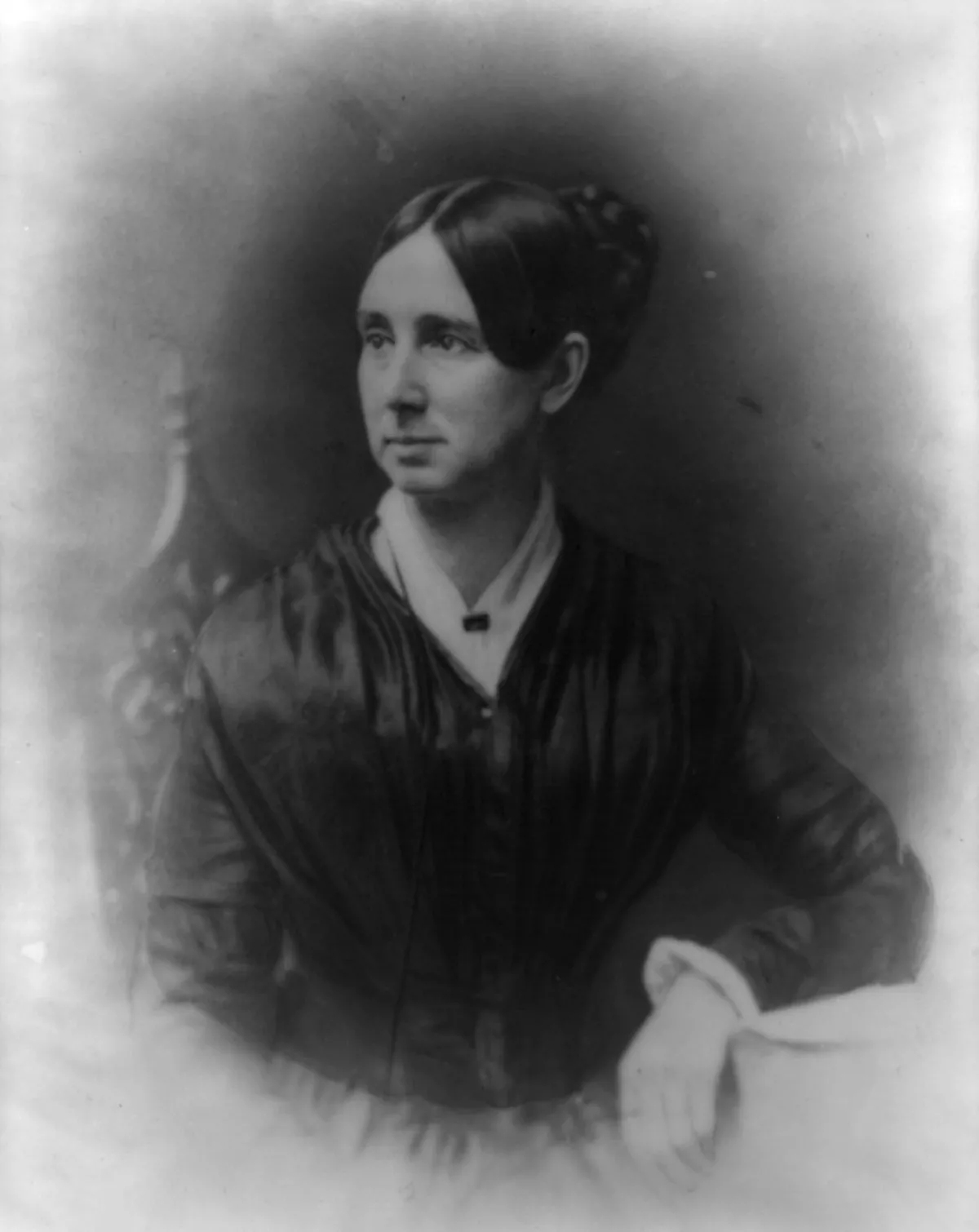 1.
1. Dorothea Lynde Dix was an American advocate on behalf of the poor mentally ill.

 1.
1. Dorothea Lynde Dix was an American advocate on behalf of the poor mentally ill.
Dorothea Dix was the first child of three born to Joseph Dix and Mary Bigelow, who had deep ancestral roots in Massachusetts Bay Colony.
Dorothea Dix's mother suffered from poor health, thus she wasn't able to provide consistent support to her children.
Dorothea Dix's father was an itinerant bookseller and Methodist preacher.
Dorothea Dix began to teach in a school all for girls in Worcester, Massachusetts at fourteen years old and had developed her own curriculum for her class, in which she emphasized ethical living and the natural sciences.
Dorothea Dix was encouraged to take a trip to Europe to improve her health.
At Greenbank, Dorothea Dix met their circle of men and women who believed that government should play a direct, active role in social welfare.
Dorothea Dix was introduced to Great Britain's reform movement for care of the mentally ill, known as lunacy reform.
Dorothea Dix saw how these individuals were locked up and whose medical needs weren't being satisfied since only private hospitals would have such provisions.
Dorothea Dix saw how such individuals were labeled as "looney paupers" and were being locked up along with violently deranged criminals and received treatment that was inhumane.
Dorothea Dix published the results in a fiery report, a Memorial, to the state legislature.
Dorothea Dix prepared a memorial for the New Jersey Legislature, giving a detailed account of her observations and facts.
Dorothea Dix urgently appealed to the legislature to act and appropriate funds to construct a facility for the care and treatment of the mentally ill.
Dorothea Dix cited a number of cases to emphasize the importance of the state taking responsibility for this class of unfortunates.
Dorothea Dix's plea was to provide moral treatment for the mentally ill, which consisted of three values: modesty, chastity, and delicacy.
Dorothea Dix gave as an example a man formerly respected as a legislator and jurist, who, suffering from mental decline, fell into hard times in old age.
Dorothea Dix discovered him lying on a small bed in a basement room of the county almshouse, bereft of even necessary comforts.
Dorothea Dix continued to lobby for a facility, writing letters and editorials to build support.
Dorothea Dix traveled from New Hampshire to Louisiana, documenting the condition of the poor mentally ill, making reports to state legislatures, and working with committees to draft the enabling legislation and appropriations bills needed.
In 1846, Dorothea Dix traveled to Illinois to study mental illness.
Dorothea Dix submitted a report to the January 1847 legislative session, which adopted legislation to establish Illinois' first state mental hospital.
In 1848, Dorothea Dix visited North Carolina, where she again called for reform in the care of mentally ill patients.
However, after a board member's wife requested, as a dying wish, that Dorothea Dix's plea be reconsidered, the bill for reform was approved.
Dix Hill Asylum, named in honor of Dorothea Dix's father, was eventually opened in 1856.
Dorothea Dix had a biased view that mental illness was related to conditions of educated whites, not minorities.
Dorothea Dix was instrumental in the founding of the first public mental hospital in Pennsylvania, the Harrisburg State Hospital.
Dorothea Dix reconnected with the Rathbone family and, encouraged by British politicians who wished to increase Whitehall's reach into Scotland, conducted investigations of Scotland's madhouses.
Dorothea Dix visited the British colony of Nova Scotia in 1853 to study its care of the mentally ill.
In 1854, Dorothea Dix investigated the conditions of mental hospitals in Scotland, and found them to be in similarly poor conditions.
Dorothea Dix took up a similar project in the Channel Islands, finally managing the building of an asylum after thirteen years of agitation.
Once again finding disrepair and maltreatment, Dorothea Dix sought an audience with Pope Pius IX.
On June 10,1861, as the Civil War turned bloody, Dorothea Dix was appointed Superintendent of Army Nurses for the Union Army, by Secretary of War, Simon Cameron.
Dorothea Dix was politician who had long admired her advocacy work.
Dorothea Dix, who was not a nurse herself, set stiff guidelines for nurse candidates.
Dorothea Dix feuded with doctors who insisted that they should set hospital policy; many opposed having any nurses.
In 1863 the Army gave doctors full control over hospital employees and volunteers and Dorothea Dix lost all of her remaining power.
Dorothea Dix was eclipsed by other prominent women such as Dr Mary Edwards Walker and Clara Barton.
Dorothea Dix resigned in August 1865 and considered her war work a failure.
Dorothea Dix distrusted them; her deep anti-Catholicism undermined her ability to work with Catholic nurses, lay or religious.
Dorothea Dix's policy was that Confederate and Union wounded should be treated alike.
Dorothea Dix had a favorable impression of the South and worked hard in the 1850s to reverse the growing North-South divisions.
Dorothea Dix made many enemies, especially two new large scale organizations, the Woman's Central Association of Relief and the Sanitary Commission.
In 1881, Dorothea Dix moved into the New Jersey State Hospital, formerly known as Trenton State Hospital, that she built years prior.
Dorothea Dix was buried in Mount Auburn Cemetery in Cambridge, Massachusetts.
Dorothea Dix wrote a variety of other tracts on prisoners.
Dorothea Dix is the author of many memorials to legislative bodies on the subject of lunatic asylums and reports on philanthropic subjects.